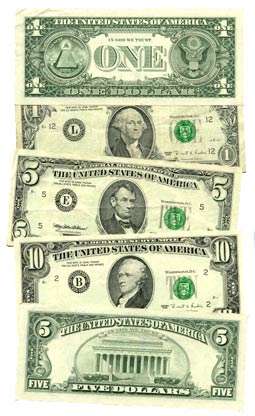Information contained in this publication is intended for informational purposes only and does not constitute legal advice or opinion, nor is it a substitute for the professional judgment of an attorney.
 On July 24, 2009, the federal minimum wage will increase from $6.55 per hour to $7.25 per hour. This increase is the third and final increase in a three phase process. In light of the impending increase, there are several issues of which employers must be aware to prepare for the change:
On July 24, 2009, the federal minimum wage will increase from $6.55 per hour to $7.25 per hour. This increase is the third and final increase in a three phase process. In light of the impending increase, there are several issues of which employers must be aware to prepare for the change:
- Replace Fair Labor Standards Act (“FLSA”) minimum wage posters. Every employer of employees subject to the FLSA's minimum wage provisions must post, and keep posted, a notice explaining the Act in a conspicuous place in all of its business establishments, so as to permit employees to readily read it. Employers may access new FLSA minimum wage posters on the Department of Labor’s (“DOL”) website
- Double check payroll fail-safes. Fail-safes are devices or features in payroll systems that ensure employees are never paid below the minimum wage. When employees are paid on a fluctuating work week basis, a day rate basis, piece rate basis, or any other basis resulting in a fluctuating “regular rate,” employers must ensure that these employees are paid at least the minimum wage. Employers should check their fail-safes and re-program them so that they do not allow employees to be paid less than $7.25 per hour (or the relevant state minimum wage).
- Employers may also use fail-safes to ensure that deductions taken from employees’ pay, for a variety of reasons, do not take employees’ wage rates below minimum wage. Employers should re-program fail-safes to ensure that deductions are not made that would result in employees being paid less than the new federal minimum wage of $7.25 per hour (or the relevant state minimum wage).
- Check state minimum wage. Several states have established a minimum wage that is higher than the federal minimum wage. Employers are required to pay the higher required minimum wage, state or federal. Check the minimum wage for the states in which you do business, which may also increase, and make sure employees are paid accordingly. See our previous post discussing state minimum wage increases in July 2009.
- Make sure employees earn enough in tips to qualify for the tip credit. Employees who receive more than $30.00 per month in tips may be paid less than the minimum hourly rate so long as each employee earns enough in tips to make up the difference between the wage paid and the federal minimum wage. Employers should double check to ensure that employees for whom the tip credit is used are earning enough in tips, combined with his or her direct wages of at least $2.13 per hour to equal the new minimum hourly wage.
- Consider how the minimum wage increase affects full-time students and other groups of individuals paid special minimum wages. Full-time students employed in retail or service stores, agriculture, or colleges and universities may be paid special minimum wages. Employers hiring students may obtain a certificate from the DOL, which allows the student to be paid not less than 85 percent of the federal minimum wage. The DOL may also issue certificates allowing employment at wages below the minimum wage for apprentices, student learners, messengers, certain employees who receive tips, and workers with disabilities. If you have employees paid a special minimum wage, which is a percentage of the federal minimum wage, the special minimum wage rate must be adjusted to reflect the appropriate percentage of the increased federal minimum wage.
This blog entry was authored by Jamie Kitces.

